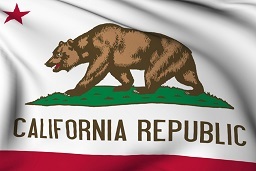On the surface, a case just decided by the U.S. Court of Appeal for the 9th Circuit looks to be one primarily of interest to those in the aviation space. In Bernstein v. Virgin America Inc., a Ninth Circuit panel ruled on February 23 that California wage and hour laws pertaining to meal and rest breaks are not preempted by federal law; namely, the Federal Aviation Act.
But beyond that determination, which was a win for the flight attendants who initiated the litigation, is an additional ruling that represents a huge victory for the defense bar and should be of interest to all employers, not just airlines. Specifically, the court in Bernstein decided that heightened penalties for “subsequent violations” under California’s Private Attorney General Act (PAGA) cannot be imposed until the Labor Commissioner or a court notifies the employer in question of the Labor Code violation(s) at issue.
The net effect of the decision in Bernstein: California employers defending PAGA claims now have clarification regarding “subsequent [Labor Code] violations” and whether they will give rise to increased legal exposure.
Why Does All of This Matter?
Pursuant to PAGA, default civil penalties are $100 “for each aggrieved employee per pay period for the initial violation,” and $200 per aggrieved employer, per pay period, per “each subsequent violation.”
The problem was that before Bernstein, courts had not clearly identified when a “subsequent violation” of wage and hour law occurs. Prior case law (Amaral v. Cintas Corp.) simply held that such a violation did not trigger until an employer learned that its conduct violated the Labor Code.
But this left a fair amount of wiggle room for aggrieved employees, who could point to any given PAGA notice, prior employee complaints and lawsuits, internal or third-party payroll audits, employer retention of third-party human resource agencies, or other evidence to demonstrate that their employers acted willfully or had knowledge of ongoing Labor Code violations that justified the $200 “subsequent” penalty rate. But now, after Bernstein, employers cannot be subject to such heightened exposure until they hear from the Labor Commissioner or a court about the occurrence of a wage and hour violation.
What Employers Need to Know in the Aftermath of Bernstein
First and foremost, Bernstein is very favorable to management because it prevents employees from arguing that heightened civil penalties under PAGA should apply after the first California Labor Code violation within the statute of limitations, and after an employer has received a PAGA notice letter or an employee’s civil complaint.
Next, employers should remember that in the event of an unsuccessful appeal of (1) a trial court decision related to a wage and hour claim or (2) a Labor Commissioner citation, they will be subject to heightened penalties that have accrued during the appeal process.
Finally, it must be understood that Bernstein only addressed civil penalties. It remains unclear whether the ruling will also apply to claims for heightened statutory penalties for wage statement violations and the like.
This blog post is not offered, and should not be relied on, as legal advice. You should consult an attorney for advice in specific situations.

